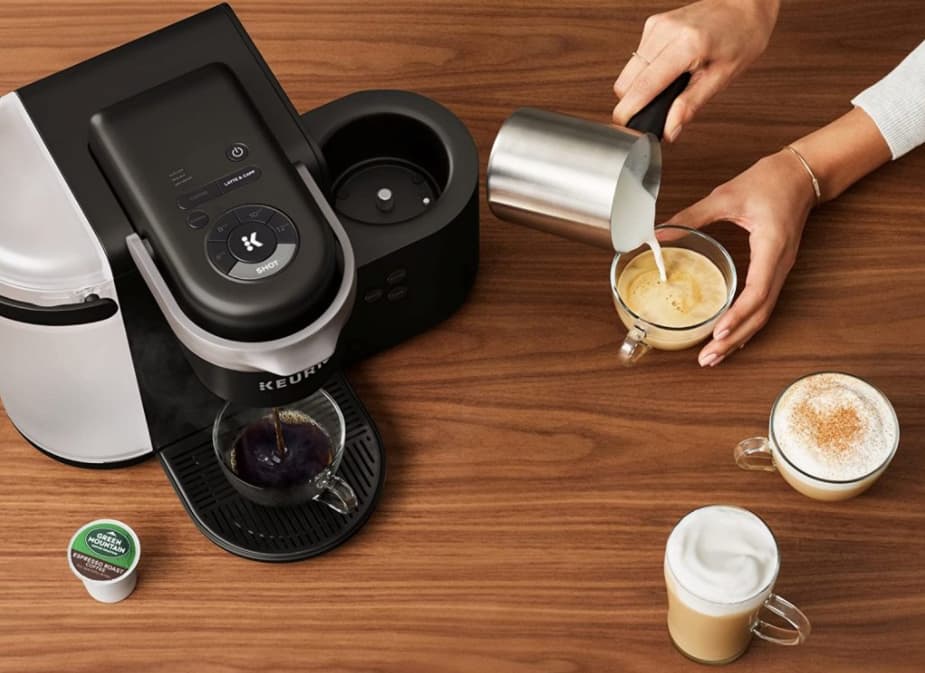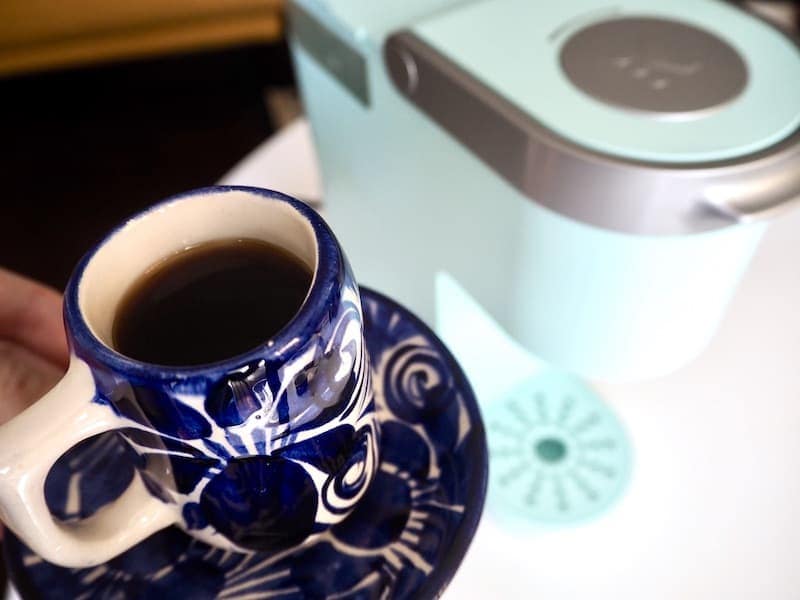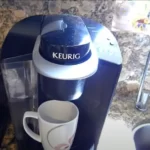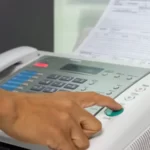
To satisfy your daily caffeine craving, a Keurig machine can make a potent cup of coffee.
But can you make espresso in a Keurig?
Yes and no, I suppose.
Keurig doesn’t produce a true espresso because it isn’t an espresso maker. However, you can undoubtedly make a cup of coffee that looks and tastes just like an authentic espresso.
Please continue reading for more information.
Can You Make Espresso In A Keurig Coffee Maker?
A Keurig can definitely brew a pot of concentrated coffee. Even so, the drink you receive is not espresso, despite similarities.
You might wonder, “Why is that?”
Well, because a Keurig doesn’t operate in the same manner as an espresso machine.
A true espresso is created by forcing hot water through coffee grounds under pressure. There isn’t any pressure when it comes to Keurig coffee makers.
There is a An espresso-based Keurig model for making lattes and cappuccinos.
It’s called Keurig Rivo, and it also features a “shot” button that creates a small but powerful cup of coffee.
However, neither of these devices can be categorized as espresso makers.
Don’t, however, give up on your Keurig coffee maker too soon.
While a coffee purist might scoff at the idea, I’m here to reassure you that your machine can produce results that are quite comparable.
What Is Espresso?
Espresso is a concentrated form of coffee that is served in shots. It is made by using an espresso machine to pressurize hot water through extremely finely ground coffee beans.
Strong, flavorful, and with a lingering aftertaste, an espresso shot is strong. A properly pulled shot of espresso is topped with crema, which keeps the coffee oils and flavors of the beans. All espresso drinks, including lattes, cappuccinos, mochas, and iced lattes, taste great when made with espresso as the base.
The same beans used to make coffee are used to make espresso. Espresso and coffee are made differently by the way the machines are ground and operated.
In contrast to an espresso machine, which uses pressure to force hot water through very finely ground coffee, a drip coffee maker makes coffee by slowly pouring hot water over medium-ground coffee.
Make Espresso With Keurig
Ingredients
- Strong, dark K-Cups
- Water
Equipment
- Keurig machine (We’re using a Keurig Mini)
- Full-size coffee cup
- Espresso cups
Pick The Appropriate K-cups.
K-Cups that are dark and robust are best for simulating espresso. We advise selecting a delicious dark roast, such as Rude Awakening’s chocolatey K-Cups, because the traditional espresso flavors are bold dark roasts. Do you require some suggestions? The top 10 espresso K-Cups are listed below.
Use The Smallest Cup Size Offered By Your Machine.
When making espresso, the standard coffee-to-water ratio is 1:2, which calls for using one part coffee and two parts water. Use the least amount of water recommended by your Keurig to get a rough idea of this. Pouring 6 ounces of water into the reservoir of our Keurig Mini is the appropriate procedure. In other models, you can select the button for the smallest cup size.
Press The Brew Button While A Cup Is Placed Beneath The Brew Head.
To catch the coffee, use a larger cup, as advised. Despite how adorable they are, espresso cups won’t work as well with a Keurig because you risk spills or overflows. You can pour your freshly brewed coffee into an espresso cup.
Pour The Coffee Into Espresso Cups
Pour your coffee into espresso-style cups for the authentic espresso experience. Although there won’t be much crema, the small cups will taste more like espresso.
Serve And Enjoy!
We hope you enjoy your tiny cup of coffee that is a little like espresso. Although it won’t be authentic espresso, it will still be tasty and stimulating. What else do you require?

Genuine Espresso Vs. Keurig Espresso
The way a machine makes coffee, as we already mentioned, is what makes an authentic espresso different from the beverage you get from a Keurig.
A true espresso maker uses pressure to force hot water through, hastening the extraction process.
However, Keurig works like a typical drip machine, slowly dripping water through the coffee. As a result, it takes longer to extract the same amount of grounds as a real espresso maker.
Additionally, the grind used by these two machines differs. In case you didn’t know, the amount of flavor that can be extracted from coffee grounds depends on its surface area.
A fine grind, slightly finer than table salt, is therefore required for an authentic espresso.
Conversely, Keurig machines use a medium- to medium-fine grind. Regarding particle size, these are more comparable to sand than salt.
You might not even be able to tell the difference in flavor between a cup made with a Keurig and one made with an actual espresso machine. You’ll receive a potent and flavorful beverage in either scenario.
However, don’t anticipate your coffee to be as thick as authentic espresso.
As with espresso made with an espresso machine, you won’t get as much crema. Instead, you’ll get a lighter and thinner top layer than what an actual espresso has.
Coffee Vs Espresso – Back To Basics
Let’s start by assuming that a coffee bean is indeed a coffee bean in order to lay the groundwork for this discussion. It doesn’t matter where or how the coffee bean was roasted. With your Keurig or espresso machine, you can make high-quality espresso or coffee using the same bean.
The brew method defines the difference between coffee and espresso:
Espresso requires the use of finely ground coffee beans that have been tightly packed together. Espresso requires you to apply high pressure and very little speed as you push hot water through the tightly packed grinds.
Coffee requires the use of a coarser grind with larger (and less uniformly ground) particles that are not firmly packed together. Coffee simply allows hot water to filter through the grind and does not require high pressure to do so.
The intensity of the flavor profile, as a result, differs between the two. Espresso can be compared to a teaspoon of blueberry jam, while coffee can be compared to a blueberry tea for intensity. Although the intensity varies, the basic flavor remains the same.
Is The K Cup Set Up For Espresso?
With the trusted K Cup, we begin our investigation. Any standard K Cup has two telltale signs that it only produces coffee when you remove the foil and carefully examine the 2 tablespoons of ground coffee inside.
First off, the coffee grounds aren’t tightly packed inside the K Cup to form a coffee puck, which is necessary for the hot water to pass through at high pressure. Instead, they’re just loosely arranged inside.
Second, the coffee grind itself is not fine enough for quality espresso, as you can see if you look at it closely.
While it is possible to fill your own K Cup (My K Cup) with the coffee grind of your choice, it is not recommended that you compact it in any way.
Are The Espresso K Cups Unique From The Standard K Cup?
It is identical on the inside if you open a K Cup that has been ladled with espresso. The coffee itself is ground similarly to other K Cups, and it is not compressed into the K Cup but rather is loose like a typical K Cup.
Can The Keurig Make Its Own Espresso?
We all know that you fill your water tank, place your K Cup inside, choose your brew size and strength, and then sit back and wait for the machine to work. To elaborate on this, here is how Keurig makes coffee, not espresso (in a little more detail).
Typically, a heating element is encircled by an aluminum pipe that transports water from the reservoir. The water is heated by the heating element to about 200 degrees.
An air-pressured tube that is connected to the brew head receives the heated water first. If you have a multi-stream technology, the pressurized hot water is distributed equally through 5 needles that pierce the top of the K-Cup.
If you don’t have multi-stream technology, the pressurized hot water is passed through a single needle that pierces the top of the K Cup.
Your coffee is made by filtering water through a K Cup, with a noticeable boost provided at the very end by a pressure pump. At this point, the increased pressure merely cleans the machine in preparation for the following use.
Since the K Cup coffee grind isn’t compacted (or fine enough), there isn’t a need for or sufficient strength in the overall pressure applied throughout the process to produce anything resembling espresso quality.
What About The K Café?
Many people will make the claim that you can make espresso using the K Caf, followed by a nice, shiny “Buy It Now” button. The truth is that the K Caf’s shot button will result in a stronger shot of coffee. There is no mention of the machine producing espresso on the Keurig website.
The coffee grounds are not compacted and the pressure is the same. By filtering the water through the K Cup more slowly than other coffee shops, the K Café produces a stronger shot.
The Other Giveaways That Keurig Only Produce Coffee
With the same amount of coffee grind (2 tablespoons), you can typically get about 3 ounces of espresso by making two shots of espresso. Depending on the bean used, the level of bitterness increases if you continue the extraction process after this point.
Given that the Keurig can brew anywhere from 4 to 16 ounces of coffee, the final product would be bitter and get increasingly watered down after 3 ounces.
There is no cream on the coffee’s head, which is another minor giveaway. The crema is the honey-colored foam you see on top of the shot after extraction (before any milk or soy-like product is added). Simply put, it’s coffee!
Conclusion
Since the Keurig machine doesn’t use pressure for brewing, the coffee you make can’t be called “real” espresso.
However, despite differences in the technical aspects of brewing, the end result is fairly comparable. Therefore, don’t let any coffee purists stop you from referring to your Keurig-brewed coffee as an espresso!
I appreciate you reading.



